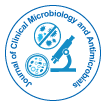

Commentary - (2025)Volume 9, Issue 1
Fungal infections, once considered secondary concerns in infectious disease management, have become a growing global health threat due to an alarming rise in antifungal resistance and the emergence of new pathogenic species. Immunocompromised populations, such as cancer patients, transplant recipients, and individuals with HIV/AIDS, are particularly susceptible to Invasive Fungal Infections (IFIs), which are increasingly difficult to treat due to limited antifungal options and the rise of resistant strains. The global burden of fungal diseases, especially from genera like Candida, Aspergillus, Cryptococcus, and emerging species such as Candida auris, continues to rise, driven by increased use of immunosuppressive therapies, longer hospital stays, and widespread antimicrobial use. The growing resistance to first-line antifungal agents, particularly azoles and echinocandins, has complicated clinical management and led to higher morbidity and mortality rates.
Among the most significant concerns in antifungal resistance is the rise of azole-resistant Aspergillus fumigatus. Resistance in this species has been linked to both long-term azole therapy in patients and the use of agricultural azole fungicides, creating environmental selection pressure that promotes resistance even before human infection occurs. Similarly, Candida glabrata and Candida krusei are increasingly resistant to fluconazole, while echinocandin resistance among Candida species is also being reported, often due to mutations in the FKS genes. Perhaps the most worrying development in recent years is the global emergence of Candida auris, a multidrug-resistant yeast capable of causing severe outbreaks in healthcare settings. This pathogen exhibits resistance to multiple antifungal classes and has a high tolerance for environmental survival, making it particularly challenging to control and eradicate.
The mechanisms driving antifungal resistance are diverse and often complex. These include genetic mutations in target enzymes, overexpression of efflux pumps, biofilm formation, and changes in cellular permeability. Unlike antibacterial resistance, which has received considerable attention and research funding, antifungal resistance is less well studied and often underdiagnosed due to the limited availability of rapid, species-specific diagnostic tools. Conventional culture-based methods are time-consuming and lack sensitivity, particularly in early or deep-seated infections. The development and integration of advanced diagnostic techniques, such as PCR-based assays, MALDI-TOF mass spectrometry, and next-generation sequencing, are critical in accurately identifying resistant strains and informing appropriate therapy.
Another challenge in the fight against antifungal resistance is the limited number of antifungal drug classes available for clinical use. Currently, only three major classes—azoles, polyenes, and echinocandins—are widely used, and cross-resistance within and across these groups is increasingly reported. The slow pace of antifungal drug discovery further exacerbates the problem, as the development of new agents is hampered by issues of toxicity, bioavailability, and narrow therapeutic windows. However, recent research into novel antifungals such as ibrexafungerp, olorofim, and fosmanogepix offers some hope, though these agents are still undergoing clinical trials or early implementation. Additionally, combination therapies, immunomodulatory treatments, and host-directed strategies are being explored to enhance efficacy and reduce resistance development.
Infection prevention and control play a pivotal role in addressing antifungal resistance. Healthcare-associated fungal infections, especially those caused by Candida auris, require strict infection control protocols, including patient isolation, environmental disinfection, and surveillance screening. Education and stewardship are equally critical, as inappropriate use of antifungal agents in both human medicine and agriculture significantly contributes to resistance. Antifungal stewardship programs, modeled after antibiotic stewardship initiatives, are essential for optimizing treatment regimens, reducing unnecessary prescriptions, and promoting susceptibility testing.
In conclusion, antifungal resistance and the emergence of novel fungal pathogens represent a silent but escalating public health crisis. The limited antifungal arsenal, increasing environmental and clinical resistance, and the emergence of virulent, drug-resistant strains such as Candida auris underscore the urgency for coordinated global action. There is a critical need for investment in fungal diagnostics, surveillance, novel drug development, and stewardship initiatives. As fungal diseases gain prominence in the infectious disease landscape, integrating antifungal resistance into broader antimicrobial resistance strategies is imperative. By raising awareness, improving diagnostic capabilities, and supporting innovation in antifungal therapy, the medical community can begin to reverse the tide of resistance and improve outcomes for vulnerable patients worldwide.
Citation: Hastings E (2025). Current Trends in Antifungal Resistance and Emerging Pathogens. J Clin Microbiol Antimicrob.09:217.
Received: 03-Mar-2025, Manuscript No. JCMA-25-37628; Editor assigned: 06-Mar-2025, Pre QC No. JCMA-25-37628 (PQ); Reviewed: 20-Mar-2025, QC No. JCMA-25-37628; Revised: 27-Mar-2025, Manuscript No. JCMA-25-37628 (R); Published: 03-Apr-2025 , DOI: 10.35248/ JCMA.25.09.217
Copyright: © 2025 Hastings E. This is an open-access article distributed under the terms of the Creative Commons Attribution License, which permits unrestricted use, distribution, and reproduction in any medium, provided the original author and source are credited.